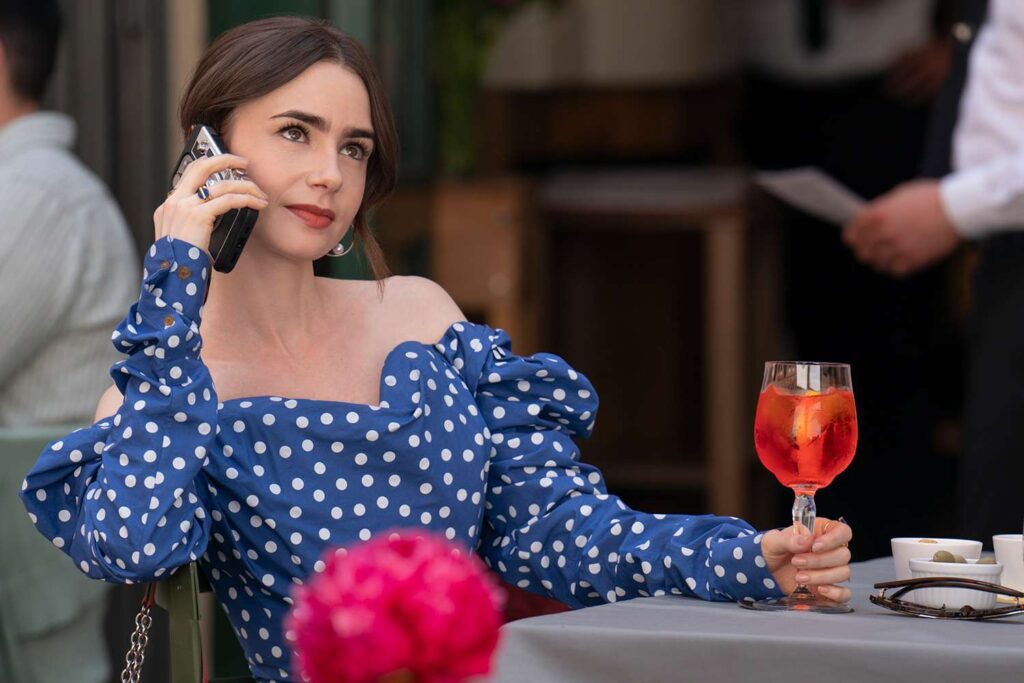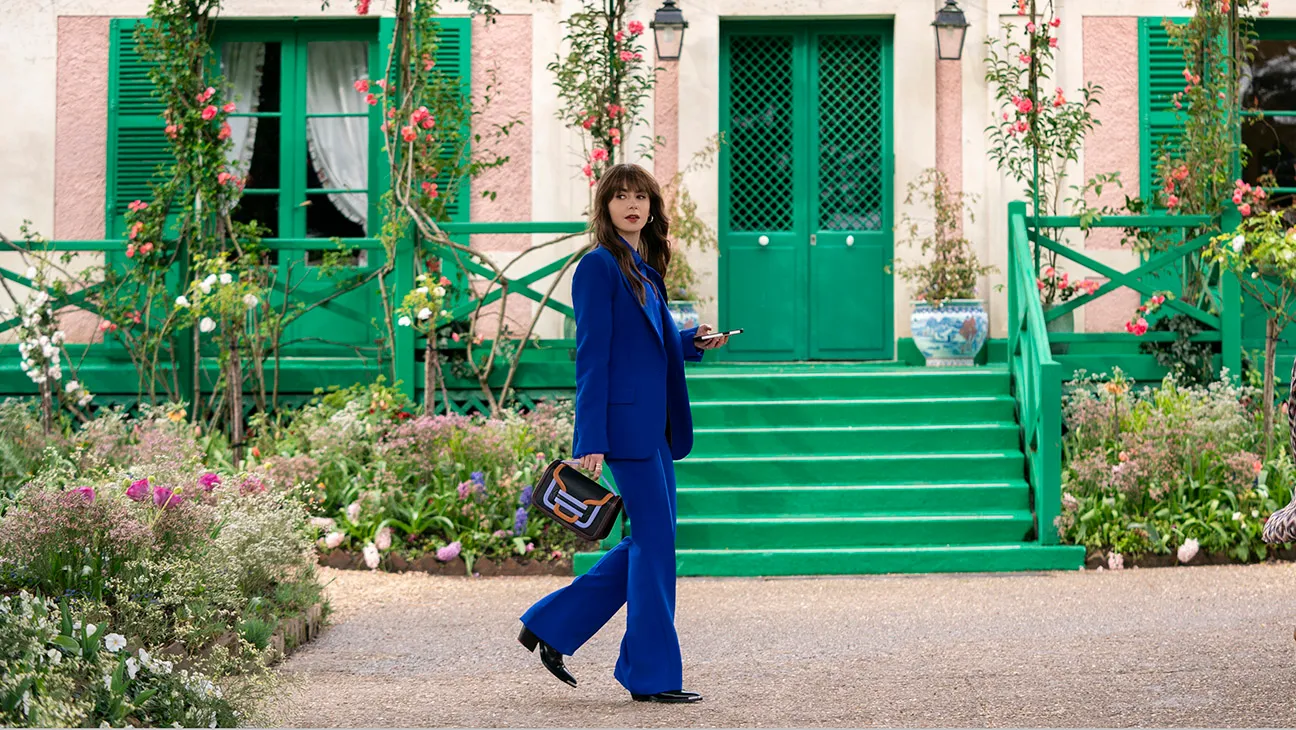Emily in Paris has been a polarizing presence since its debut, adored by some for its romanticized depiction of the City of Light and derided by others for its lack of depth. Now with four seasons under its belt, the show continues to walk a fine line between guilty pleasure and frustratingly superficial entertainment. As Netflix’s light-hearted, fashion-filled answer to pandemic escapism, the show succeeded in whisking audiences away from their dreary realities, but can it still sustain interest as the world moves on?
A Fantasy of Paris, But With a Limited Vision
From the very beginning, Emily in Paris is an unabashed love letter to Paris – or at least to an idealized version of it. The show’s visuals are stunning, offering picturesque shots of iconic Parisian landmarks, from the Eiffel Tower to the charming streets of Montmartre. The city is presented as an Instagram feed come to life, filled with gorgeous outfits, gourmet meals, and picture-perfect vistas. For viewers yearning for escapism, this version of Paris is pure candy. However, while the show’s dreamy visuals remain as captivating as ever, the charm of this fantasy begins to wear thin after four seasons. Paris in Emily in Paris is largely devoid of any real cultural tension or complexity.
While earlier seasons flirted with the idea of culture shock—Emily, a brash American marketing executive, struggling to fit in with her more refined French colleagues—these moments are largely glossed over in favor of lightweight, easily resolved conflicts. At its core, the show’s depiction of Paris feels frozen in time, sticking to the same clichés about French life and never delving deeper into the authentic experiences of locals. Paris is reduced to a fashion backdrop rather than a living, breathing city with all its grit, beauty, and contradictions.
Emily’s Evolution (Or Lack Thereof)
Lily Collins’s portrayal of Emily remains central to the series’ charm. She brings an endearing energy to the character, balancing wide-eyed wonder with determined ambition. Yet, despite her vivacious personality, Emily feels trapped in a narrative loop that refuses to let her grow. Over the course of four seasons, she remains stuck in many of the same dilemmas: navigating romantic entanglements with Gabriel (Lucas Bravo) and Alfie (Lucien Laviscount), struggling to fit into her marketing job at Savoir, and balancing her professional life with her personal drama. This lack of meaningful character development is becoming increasingly hard to overlook.

The show’s premise—Emily is a fish out of water, finding her place in a foreign city—should have naturally led to personal growth.
By season 4, though, she still seems to be the same person she was when she first landed in Paris: confident yet clueless, vibrant yet lacking depth. Perhaps the show’s writers are afraid that allowing Emily to mature would strip the series of its lighthearted tone. However, viewers craving more substance may find themselves disappointed by Emily’s stagnant character arc. For a show that purports to be about personal reinvention and adapting to new environments, it misses the opportunity to truly explore what such a journey could entail.
Fashion and Glamour: The Real Stars of the Show
Of course, it would be remiss to talk about Emily in Paris without acknowledging the fashion, which is arguably the show’s real selling point. Costume designer Patricia Field continues to deliver eye-popping looks that push the boundaries of Parisian chic. Every episode feels like a runway show, with Emily sporting bold, colorful ensembles that are more haute couture than realistic workwear. It’s pure fantasy, but it’s also part of the show’s appeal—who wouldn’t want to live vicariously through Emily’s wardrobe, even if it defies practical fashion norms? The supporting cast also benefits from the fashion spotlight. Mindy (Ashley Park), Sylvie (Philippine Leroy-Beaulieu), and Camille (Camille Razat) all serve up looks that contribute to the show’s overarching visual appeal.
The clothes are as much a part of the characters as their personalities, adding a layer of glamor and escapism that keeps viewers hooked. However, while the fashion is undeniably fun, it also contributes to the show’s style-over-substance problem. Emily in Paris often feels more like a glossy fashion magazine come to life than a show with any real depth or narrative drive. Viewers looking for something with more emotional or intellectual weight will, after a point, find the reliance on aesthetic and superficial drama, tiring.
Relationships: Stuck in the Same Love Triangle
The romantic entanglements in Emily in Paris have always been central to its storyline, but by season 4, the on-again-off-again dynamics between Emily, Gabriel, and Alfie are beginning to feel repetitive.
The love triangle that has been dragging on since season 1 is stuck in an endless cycle of misunderstandings, missed opportunities, and unresolved feelings.
At this point, the show seems unwilling to commit to any real resolution. Every time Emily and Gabriel get close to confronting their feelings for each other, something intervenes—be it Camille’s involvement or Emily’s relationship with Alfie. While this might have been compelling in the early seasons, it now feels like a recycled plot device, keeping the characters in limbo without any real payoff. Meanwhile, supporting characters like Mindy have been given more screen time for their own romantic subplots, but these, too, often feel like distractions from the lack of progression in the main storyline. It’s a shame because the show has potential to explore these relationships in greater depth. Instead, it often resorts to surface-level drama, with each episode neatly wrapping up without significant emotional stakes.
The Appeal of Escapism
Despite these criticisms, it’s important to acknowledge that Emily in Paris still offers something valuable to its audience: pure escapism. In a world that often feels chaotic and stressful, there’s undeniable comfort in a show that doesn’t take itself too seriously. The low-stakes drama, gorgeous scenery, and glamorous lifestyle make Emily in Paris an easy watch—one that doesn’t demand much from its viewers. For many, this is precisely why the show remains popular. It’s not meant to be challenging or thought-provoking. Instead, it offers a fantasy world where the biggest problems can be solved with a charming smile, a fabulous outfit, and a bit of creative marketing.
Will Emily’s Journey Continue?
As Emily in Paris reaches its fourth season, it’s clear that the show’s success is rooted in its capacity to offer lighthearted entertainment rather than profound storytelling. The fashion is fabulous, the city is romantic, and the drama is just dramatic enough to keep viewers entertained. However, the series risks stagnation if it doesn’t evolve beyond its initial formula. Without meaningful character development or fresh storylines, Emily in Paris may start to feel like a beautiful, but hollow, caricature of the Parisian dream. For now, it still has its charm—but how long that charm lasts will depend on whether Emily, and the show as a whole, can grow into something more than just (a) pretty face(s).






















